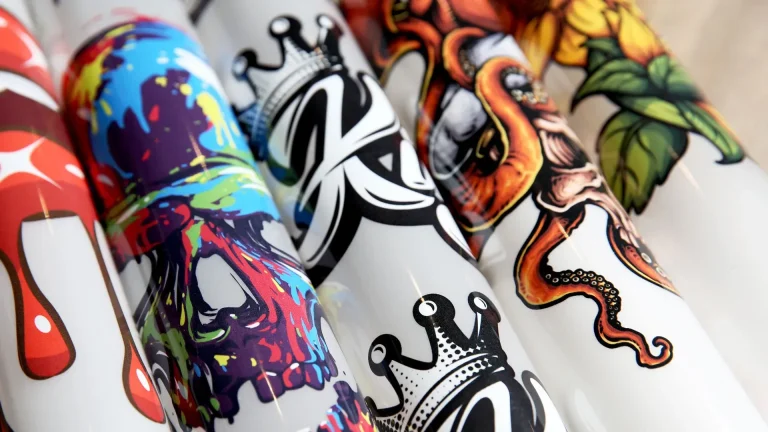DTF transfers, or direct-to-film transfers, have revolutionized the way we customize apparel and fabric items, offering unrivaled versatility and the ability to create exceptionally vivid designs. This innovative DTF printing technology has gained popularity for its user-friendly nature, making it accessible for both seasoned professionals and newcomers to the world of custom printing. With DTF transfers, the variety of transfer sizes available allows for tailored applications on everything from t-shirts to bags, ensuring your designs fit perfectly and look stunning. In this article, we will delve into the significance of selecting the right DTF transfer sizes and how they contribute to the overall success of your projects. By understanding these essentials, you can ensure that your custom DTF transfers deliver the eye-catching results you desire.
When discussing the world of fabric customization, direct-to-film transfers (also known as DTF printing) offer an impressive solution for crafting unique designs on garments and accessories. This modern printing approach gives users a vast selection of custom DTF transfers, allowing for both small and large applications suited to various fabric items. The chance to achieve optimal aesthetics through appropriate DTF transfer sizes makes these techniques popular among apparel enthusiasts seeking quality and creativity. Moreover, the accessibility of DTF printing technology ensures that even those new to custom design can produce striking visuals effortlessly. In this guide, we will explore the nuances of selecting DTF transfer sizes that best match your project’s vision.
The Versatility of DTF Printing Technology
DTF printing technology stands out due to its remarkable versatility, enabling users to customize a wide range of fabrics and items. Whether you aim to personalize t-shirts, hoodies, or even bags, DTF transfers offer the flexibility you need. With vivid colors and intricate designs made possible through this innovative technique, you can cater to diverse markets, from sports teams to fashionistas. This adaptability makes it an excellent choice for both large and small scale projects, allowing businesses to explore various applications.
Moreover, the advantages of DTF printing extend beyond the types of materials it accommodates. Direct-to-film transfers can be applied to synthetic and natural fibers alike, allowing for a broader audience. This includes cotton, polyester, and blended fabrics, which are prevalent in the apparel industry. The ease with which DTF transfers adhere to these materials enhances their appeal among custom printing companies, helping them deliver high-quality, long-lasting products.
Frequently Asked Questions
What are DTF transfers and how do they work?
DTF transfers, or Direct-to-Film transfers, involve a printing technique where designs are printed onto a special film and then heat-pressed onto fabric. This versatile method is popular for custom DTF printing due to its ability to produce high-quality, vibrant designs on a wide range of materials.
How do I choose the right size for my DTF transfers?
Choosing the right size for DTF transfers is crucial for aesthetics and functionality. Measure your garment’s width and height, refer to size charts provided by suppliers, and consider the design’s visual appeal when selecting transfer sizes. Small transfers are best for mini designs, while larger transfers suit full-front graphics.
Can I use DTF transfers on all types of fabric?
Yes, DTF transfers are versatile and can be applied to various fabrics, including cotton, polyester, and blends. This makes them an excellent choice for custom apparel projects. However, it’s always advisable to check compatibility with your specific fabric type for optimal results.
What are the benefits of using custom DTF transfers over other methods?
Custom DTF transfers offer several benefits, including vibrant color reproduction, a wide range of material compatibility, and ease of application. Unlike some traditional methods, DTF printing is simple and allows for high-resolution designs, making it ideal for custom apparel manufacturing.
Are there any limitations in DTF printing technology?
While DTF printing technology is highly advanced, limitations may include maximum transfer sizes dictated by the printer specifications and the need for proper curing processes. Ensuring that you follow guidelines from your supplier can help mitigate these issues.
What trends are currently shaping the DTF transfer market?
The DTF transfer market is experiencing trends such as increased demand for customization across apparel and accessories, as well as advancements in printing technology. These trends highlight an interest in personalized designs for events, businesses, and team wear, making DTF an attractive option for small businesses.
| Key Point | Details |
|---|---|
| What are DTF Transfers? | A printing technique where designs are printed onto special film and heat-pressed onto fabric. |
| Benefits of DTF Transfers | 1. Versatility with various materials and colors. 2. High quality with vibrant designs. 3. Easy to use for beginners. |
| Choosing the Right Size | Consider garment types: – Small transfers for mini designs. – Medium transfers for logos. – Large transfers for full-front designs. |
| Measuring Fit | Measure garment width and height for optimal transfer size placement. |
| Design Compatibility | Not all designs fit all sizes; consider aesthetic appeal and printer limitations. |
| Trends in DTF Transfers | Growing demand for customization in small businesses and improved technology. |
| Resources | Blogs, tutorials, and supplier websites provide valuable sizing information. |
Summary
DTF transfers are an innovative solution for customizing garments, and understanding the sizing options is crucial for project success. In this discussion, we highlighted how to effectively choose, measure, and apply DTF transfers for stunning results. By considering garment dimensions and design compatibility, you can ensure that your designs not only achieve a professional look but also fit perfectly on your chosen items. With the rise of customization and technological advancements in printing, embracing the DTF transfer method allows you to create eye-catching and personalized apparel. Make sure to utilize available resources and keep abreast of the latest trends in DTF transfers to enhance your projects.

